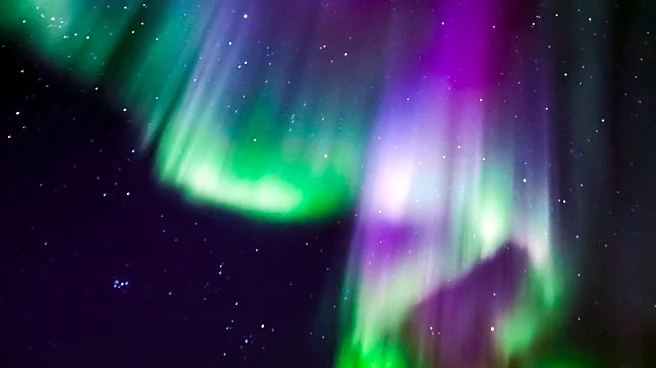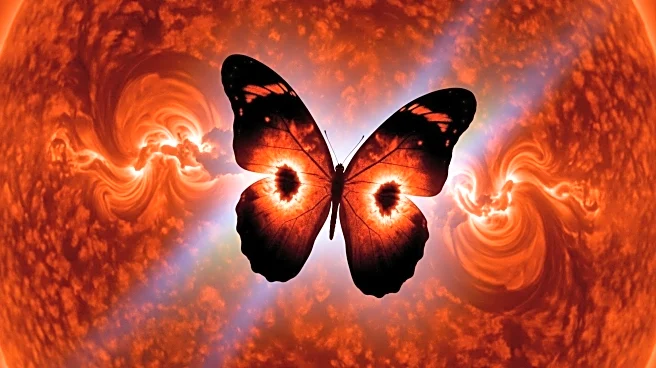What's Happening?
The Northern Lights, or aurora borealis, have been visible across the UK, marking the start of the autumn season. Experts like Dr. Maria-Theresia Walach from Lancaster University provide guidance on how to best view and photograph these natural phenomena. Factors such as cloud cover, light pollution, and solar activity play crucial roles in visibility. The current peak in the Sun's 11-year activity cycle increases the likelihood of auroral displays. Enthusiasts are advised to seek dark, open areas away from city lights and to use apps and forecasts to time their viewing.
Why It's Important?
The Northern Lights are a captivating natural phenomenon that attract photographers and nature enthusiasts worldwide. Understanding how to view and capture them enhances public appreciation of natural sciences and astronomy. The increased solar activity this year offers more opportunities for people to witness these displays, potentially boosting tourism in regions known for aurora sightings. Additionally, the event highlights the importance of public engagement with scientific phenomena, fostering a greater interest in space weather and its effects on Earth.
Beyond the Headlines
The cultural and scientific significance of the Northern Lights extends beyond their visual appeal. They serve as a reminder of the interconnectedness of solar and terrestrial systems. The auroras also inspire artistic and cultural expressions, contributing to local economies through tourism. As more people become interested in viewing the auroras, there is an opportunity to educate the public about space weather and its broader implications, including its impact on technology and communication systems.











